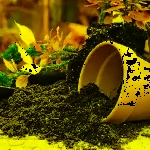
Hardwood is not the sole option for a home’s hardwood flooring appeal. Instead, there can be a variety of manmade materials, e.g. vinyl wood flooring thatis designed to mimic the appearance of hardwood and also provides a number of advantages that genuine hardwood cannot.
However, real wood flooring has inherent qualities that no manufacturing method can entirely replicate.
Flooring Domain is known as the best flooring directory and online marketplace in Australia, where people can find the best contractors near them.
Let us compare these two flooring materials based on the following parameters:
VINYL WOOD FLOORING
1. Cost
For good quality materials, expect to pay $2 to $5/square foot. Although basement vinyl can be found for as little as $1/square foot, it will not be as much durable or appealing as higher-end vinyl.
2. Durability/life cycle
Manufacturer warranties typically cover this type of material for a period of 10 to 20 years. The thickness of a protective layer on the material determines its lifespan.
3. Versatility
The appearance of any vinyl hardwood flooring is merely a printed replica of the real thing. As a result, the appearance of nearly any wood species can be produced.
4. Water damage concerns
This synthetic substance is immune to humidity or moisture infiltration or damage. Low-quality adhesives may break away in moist situations, causing tile curling, however, water will not damage the material itself.
5. Environmental factors
Vinyl hardwood production also consumes a significant amount of power/energy and can produce a number of harmful byproducts.
Flooring Domain is the best flooring directory and online marketplace in the USA, where people can find the best contractors near them.
NATURAL HARDWOOD
1. Cost
Based on the type of wood used, prices range from $8 – $25/square foot. Softwood products like pine and plywood sheets can be acquired for much less in some situations.
2. Durability/life cycle
Hardwood flooring may survive for centuries, if properly cleaned and cared for. The material can be exceedingly stable and also resistant to damage based on the wood type, and treatments are employed to preserve the aesthetic strength of hardwood.
3. Versatility
All wood may not be created equal, and a variety of factors will influence the final appearance of your floor. This includes the wood species, grade, cut, and any color/finish treatments you decide to use.
4. Water damage concerns
Wood is a natural absorbent substance, thus liquids will prefer to soak up when they come into contact with it. If the fluid has a color, it can leave a stain on the wood that is permanent. Moisture penetration, even if it is simply water, can lead to mold and mildew growth, and other nasty bacteria.
5. Environmental factors
These materials are derived from living trees that have been collected from a variety of woods. While trees are inherently regenerating, you should be sure that the hardwood that you buy comes from a company that practices environmental stewardship.
Flooring Domain is the best blog inthe flooring industry. It is their blog website, where users can read flooring-related informative blog posts, reviews, press releases, interviews, etc.




